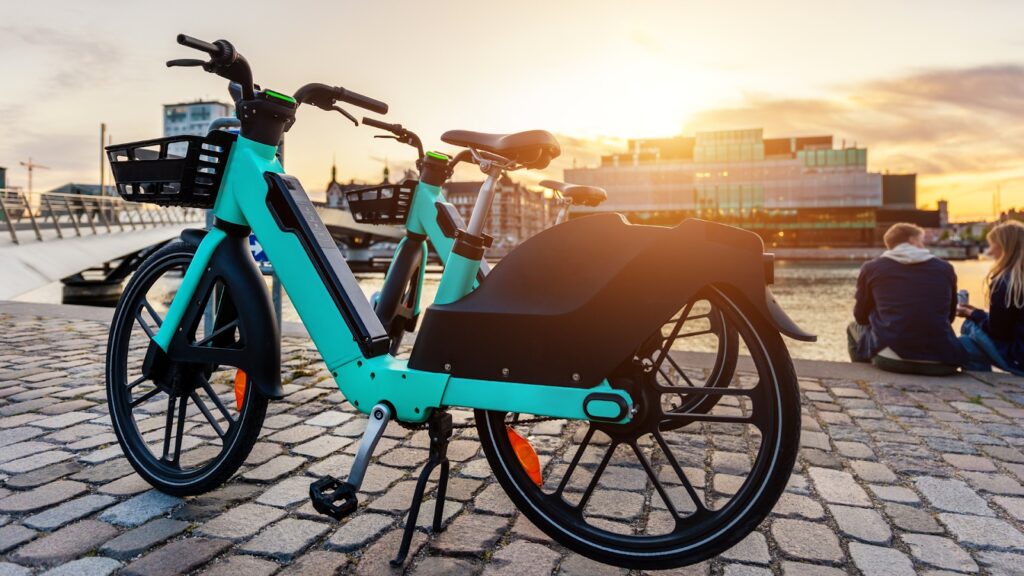Tired of sitting in traffic or squeezing into packed buses? You’re not alone. More and more Canadians are turning to e-bikes as a smarter, quicker, and cleaner way to move through city streets. With the e-bike market in Canada booming, growing from around CAD 240 million in 2022 to an expected CAD 345 million by 2025, it’s clear that something big is happening. This isn’t just about new gadgets; it’s about a shift in how we live, work, and travel. In this blog, we’ll explore how e-bikes are changing the way people navigate Canadian cities, one smooth, silent ride at a time.
The Electric Revolution on Canadian Streets
Something’s changing on the streets of Toronto, Vancouver, and Montreal. You’ll notice more people zipping past traffic on e-bikes, looking relaxed while everyone else sits stuck in gridlock. This isn’t just a trend – it’s reshaping urban mobility across Canadian cities in ways we couldn’t have imagined just a few years ago.
Why Cities Are Embracing the Change
Canadian cities are recognizing that traditional transportation systems can’t keep up with growing populations and environmental concerns. E-bikes offer a practical solution to multiple challenges; they’re cleaner than cars, faster than walking, and don’t require the large-scale infrastructure that subway systems need.
Cities like Vancouver are embracing this shift by expanding their cycling infrastructure. Reliable options are becoming more accessible for everyday commuters, thanks to quality electric bicycles from cycrown ebike canada. The change isn’t happening overnight, but it’s gaining momentum..
Breaking Down Traditional Transportation Barriers
Electric bicycles eliminate many excuses people used to avoid cycling. Too hilly? The motor helps. Too far? The extended battery range covers longer distances. Too tired after work? The pedal assist makes the ride home feel effortless. These aren’t just bikes anymore – they’re legitimate transportation tools that compete directly with cars for urban trips.
Real Benefits for Urban Commuters
Let’s talk about what really matters to people making daily commutes across busy cities.
Time and Cost Savings
Here’s something that might surprise you – e-bikes often beat cars in city centers. While drivers circle looking for parking, e-bike riders pull up right to their destination. No parking fees, no gas costs, no insurance premiums piling up monthly.
The math is pretty compelling. After the initial purchase, maintenance costs are minimal. Battery charging costs pennies compared to filling a gas tank, and many workplaces now offer charging stations as employee perks.
Health and Environmental Advantages
You’re still pedaling, even with motor assistance, which means you’re getting exercise without the intense workout that might leave you sweaty at the office. Many riders find they arrive at work more energized rather than stressed from traffic.
The environmental impact speaks for itself. Every e-bike trip replaces a potential car trip, reducing emissions and urban air pollution. It’s a win-win situation that benefits both individual health and community wellbeing.
Professional Applications Changing the Game
Delivery Services Going Electric
Delivery drivers are discovering that e-bikes aren’t just viable for their work – they’re actually superior to traditional vehicles in many situations. They can access areas cars can’t reach, park anywhere, and avoid traffic delays that cost time and money.
Food delivery, courier services, and even some medical delivery services are switching to electric bicycles for urban routes. The operating costs are lower, and customer satisfaction increases when deliveries arrive faster and more reliably.
Business Integration Success Stories
Some businesses are providing e-bikes for employee commuting programs. It’s cheaper than parking subsidies and creates healthier, happier employees. Sales teams use them for client visits in downtown areas where driving is impractical.
Infrastructure Development Across Canada
Bike Sharing Programs Taking Off
Bike sharing systems are expanding beyond traditional bicycles to include e-bikes. Cities like Montreal and Toronto are integrating electric options into their existing programs, making them accessible to people who might not want to purchase their own.
These programs are particularly effective for tourists and occasional users who want to experience urban mobility without the commitment of ownership.
The convenience factor is huge – grab a bike, ride where you need to go, and drop it off.
City Planning for Electric Bicycles
Urban planners are rethinking street designs with e-bikes in mind. Protected bike lanes, charging stations, and secure parking facilities are becoming standard considerations in new developments. Some cities are even retrofitting existing infrastructure to accommodate the growing number of electric bicycles on their streets.
Challenges and Future Outlook
Current Hurdles to Address
Weather remains a significant challenge in many Canadian cities. Winter cycling requires preparation and proper equipment, though many dedicated riders continue year-round. Battery performance in cold temperatures and safe storage are ongoing concerns.
Regulations vary between provinces and municipalities, creating confusion about where e-bikes can be ridden and what safety equipment is required. Standardizing these rules would help adoption rates.
What’s Coming Next
Technology continues to improve rapidly. Batteries are getting lighter, more powerful, and longer-lasting. Smart features like GPS tracking, theft protection, and app integration are becoming standard rather than premium options.
| Feature | Traditional Bike | E-Bike | Car |
| Average Speed (Urban) | 15 km/h | 25 km/h | 20 km/h* |
| Operating Cost/Month | $20 | $35 | $400+ |
| Parking Required | Minimal | Minimal | Significant |
| Weather Dependency | High | Medium | Low |
| Environmental Impact | Very Low | Low | High |
The Road Ahead for Urban Transportation
E-bikes are more than a passing trend in Canadian cities. They’re practical solutions to real urban transportation challenges, offering benefits that traditional options simply can’t match. As infrastructure continues developing and technology keeps improving, we’ll likely see even more dramatic changes in how people move around cities.
The transformation isn’t just about individual transportation choices – it’s about creating more livable, sustainable urban environments for everyone.
Your E-Bike Questions Answered
1. How far can most e-bikes travel on a single charge?
Most modern e-bikes can travel 40-80 kilometers on a single charge, depending on terrain, rider weight, and assist level used.
2. Are e-bikes allowed on all bike paths in Canada?
Regulations vary by province and municipality, but most allow e-bikes on bike paths with speed restrictions typically around 32 km/h.
3. What’s the maintenance cost compared to a car?
Annual maintenance for an e-bike typically costs $200-400, compared to $1,200+ for car maintenance, insurance, and registration fees.



